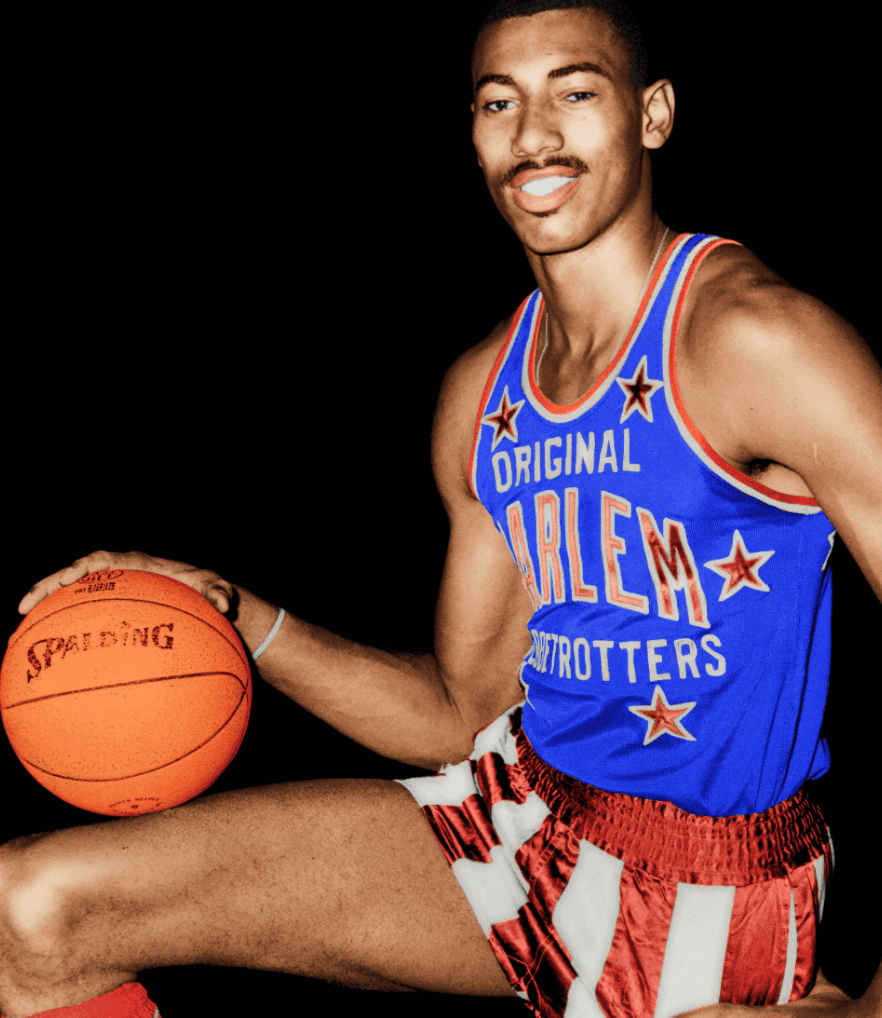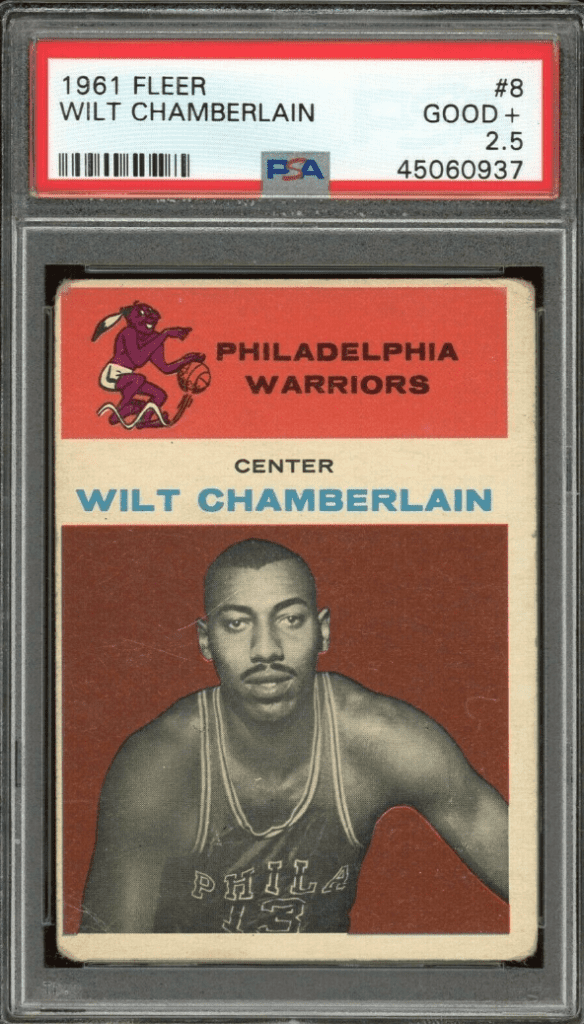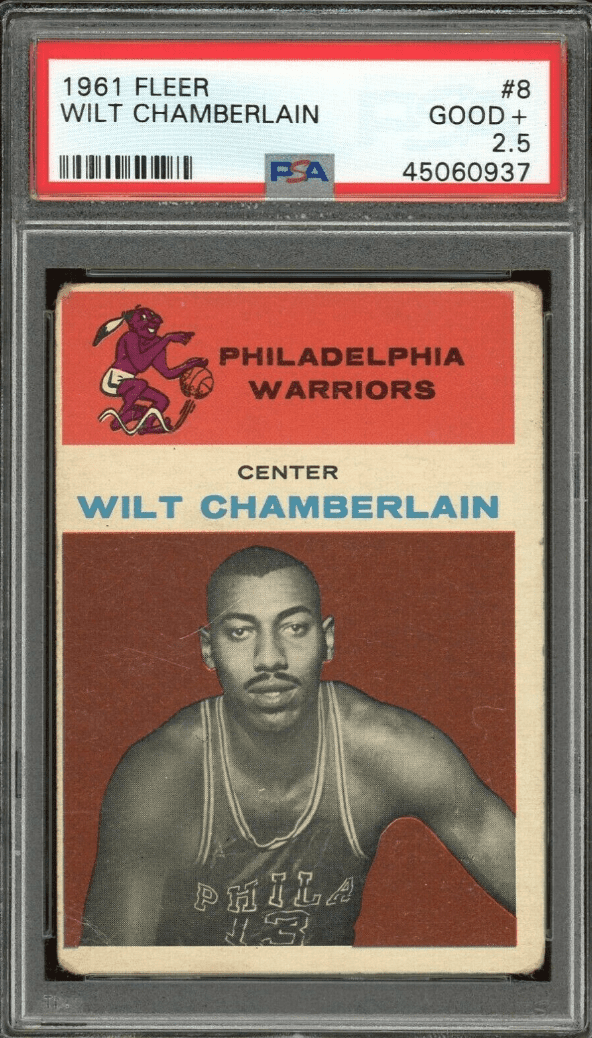The 1959 NBA MVP was Wilt Chamberlain, one of the greatest basketball players of all time, marking the first of only 2 rookie seasons to garner a league MVP award to this day. So the 1959 NBA MVP was ultimately responsible for a major shift in professional basketball, setting the bar for years to come.
Chamberlain’s Road to the NBA

Wilt Chamberlain played for the University of Kansas Jayhawks from 1955 until May 1958, when he left college early to play professionally. NBA rules at the time dictated that you could not be eligible for the NBA draft until your college class had graduated. Chamberlain spent the 1958–59 season playing for the Harlem Globetrotters, who did not maintain the college restriction of the NBA.
But in 1959, Wilt was drafted to the Philadelphia Warriors. At the time, moving over to the NBA from the Harlem Globetrotters meant a 20,000$ pay cut, even as the highest paid NBA player ever at the time with an annual salary of 30,000$.
Wilt was taken in advance of the main draft as a territorial pick. The NBA offered the territorial pick between 1950 and 1966. This special pick allowed teams an extra edge in acquiring players with an existing following in their region. The logic being that the league would be able to better capitalize on the existing reputations of the players they acquired.
The territorial pick typically went to the region where a player had played college ball. Wilt had spent his college career with the Kansas Jayhawks, nearly 1,200 miles from Philadelphia, but Warriors owner Eddie Gottlieb argued successfully that his storied high school years in Philly would justify a Warriors pick. And so, Wilt went to the Warriors, joining a starting lineup that remarkably included 4 other native Philadelphians: Tom Gola, Ernie Beck, Paul Arizin, and Guy Rodgers.
Wilt Chamberlain’s Rookie Season

Wilt Chamberlain’s rookie season remains to this day the most impressive rookie season in NBA history. He shook the stage with his stats, and ultimately secured the 1959 NBA MVP award.
At 7’1″ and 250 lbs, Wilt was physically the perfect model for a basketball player of the era. And that’s before he managed to pack on an extra 50 lbs of muscle as his career progressed. But he played with the quickness and finesse of a much smaller player. It’s hard to not draw the modern comparison with Victor Wembanyama the current prospect for a game changing combination of skill and genetic advantage.
And there have been other comparisons over the years. But never have those comparisons managed to deliver with the impact of the original. Chamberlain wrapped up his rookie season with a per game average of 37.6 points, 27.0 rebounds and 2.3 assists across 72 games. Every time I come across those stats, I pause…
Road to the 1959 NBA MVP
Wilt broke Points Per Game and Rebounds Per Game records in his rookie season. Those records had been set just one year earlier by Bob Pettit and Bill Russell, respectively. He broke the key offensive and defensive season records, which had been placed by two legends in their primes, in his first professional year.
His performance took the Warriors (a 32-40 team the year before) to the East Division finals and a 49-26 record in the 1959-60 season. Philadelphia lost in six to the Celtics, even with Wilt managing 30.5 points and 27.5 rebounds against Bill Russell. Yeah, that same Bill Russell that had set the rebound record the year before.
No surprise then, that Wilt took the 1959 NBA MVP trophy in his rookie year. He remains one of only two players to have won the NBA league MVP award in their rookie season. He played in the All-Star Game and took the 1959 NBA All-Star MVP that same year.
Rookie Challenges
Chamberlain’s rookie year was not without its challenges. Opposing teams were deeply motivated to go to extreme lengths to isolate this dominant scoring force. He was regularly double and triple-teamed in the regular season. Both the media and opposing fans were not kind.
In the finals, Celtics coach Red Auerbach ordered an onslaught of personal fouls on Chamberlain. Wilt’s great weakness throughout his career was free throw shooting. He shot free throws at just over 58% in his rookie year, but averaged only 51.1% across his career. So Wilt would go to the line, and Celtics Forward Tom Heinsohn would just latch onto him to keep him from returning to the opposite basket for blocks. The strategy worked too well to not stick with it.

Chamberlain got so frustrated with Heinsohn in game 3 that he punched him, injuring his own hand. The Warriors lost the next 2 games. By the time Wilt’s hand was healed up in game 5, the Celtics had taken their lead. The Warriors took game 5, but Heinsohn ended up with a last-second tip-in, to take game 6 and the series.
All of this pushed Chamberlain to vocally consider retirement after his rookie season. Luckily, the league managed to keep him on, bumping his salary to 65,000$ for the 1960-1961 season.
Conclusion
Ultimately, the league was different after 1959. Chamberlain demonstrated such dominance in his sport that the NBA would have to reshape their rules and style of play in the coming years to accommodate it. All thanks to Wilt Chamberlain, the 1959 NBA MVP.
